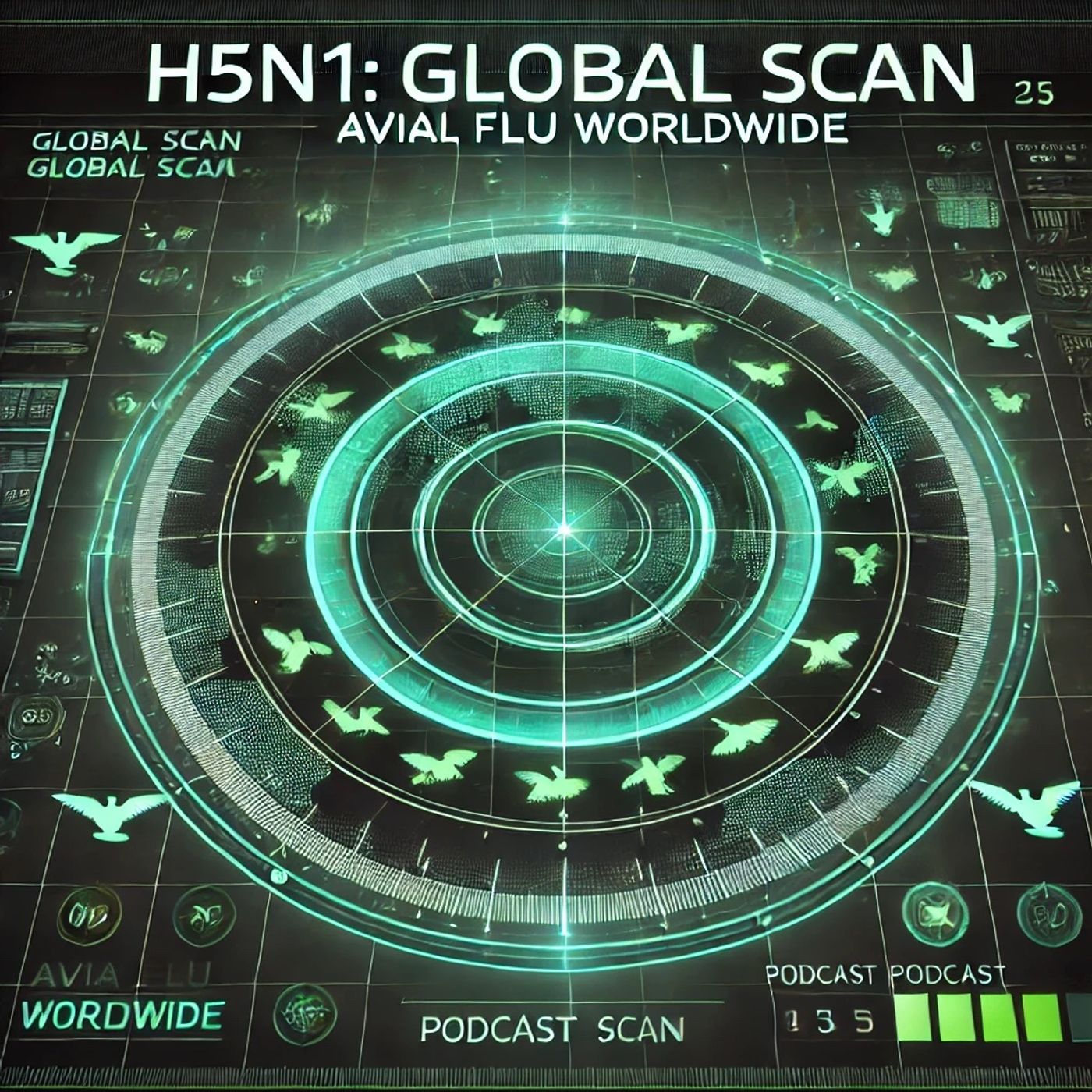Podcast Episode Details
Back to Podcast Episodes
H5N1 Avian Flu Spreads Globally: 26 Human Infections Reported Worldwide, WHO Maintains Low Pandemic Risk
Welcome to H5N1 Global Scan: Avian Flu Worldwide. I’m your host, and today we’re diving into the global impact of the H5N1 avian influenza, bringing you key insights and the latest developments from every corner of the world.
Since the resurgence of highly pathogenic avian influenza H5N1 in 2020, outbreaks have been reported almost everywhere except Australia. According to the CDC and the World Health Organization, as of August 2025, there have been 26 human H5N1 infections globally this year, with fatalities occurring in Cambodia, India, and Mexico. Most cases arose from direct contact with sick poultry or wild birds, and no sustained person-to-person transmission has been detected, keeping public health risk for the general population rated as low. However, clusters and fatalities, particularly among children in Cambodia, highlight the ongoing vigilance required.
Let’s break it down by continent. In Asia, Cambodia saw an unusually high number of human infections this year, mostly linked to backyard poultry, according to WHO. India reported fatalities and continued sporadic outbreaks. Across Europe, the United Kingdom detected H5N1 in poultry workers as well as spillover infections in sheep. In North America, the United States documented several outbreaks in poultry and dairy cattle, but after an initial wave, no new human cases since mid-February. Mexico saw its first pediatric H5N1 fatality in April. South America, especially Peru, has reported outbreaks in domestic birds. Africa continues to monitor migratory bird routes with periodic animal cases.
On the international research front, the Global Center for Health Security and regional partners hold biweekly briefings, focusing on transparency in data and rapid response. Major efforts are underway to track viral mutations, study cross-species spillovers, and ensure early detection, with global data shared via platforms such as the FAO EMPRES, the USDA, and WHO’s event-based surveillance.
WHO and the Food and Agriculture Organization remain at the heart of coordination. Both stress that while the overall risk of a pandemic remains low, all countries must maintain strong surveillance, transparent reporting, and preparedness in animal and human health sectors. The World Organisation for Animal Health plays a pivotal role in monitoring animal outbreaks and trade implications.
Cross-border issues are significant. H5N1 outbreaks in poultry have disrupted international trade, with mass poultry culls in the US, UK, and parts of Asia causing egg and meat shortages, price spikes, and export bans. South-to-north spread along wild bird flyways continues to challenge containment.
On vaccine development, several nations and consortia are conducting trials of both animal and candidate human H5N1 vaccines. While progress is promising, the WHO notes that no broadly distributed human vaccine is approved yet, and pandemic preparedness relies mainly on rapid candidate vaccine adaptation.
National containment strategies vary. The US and UK have focused on aggressive culling and farm surveillance, while Cambodia, India, and Mexico emphasize community awareness and limiting backyard poultry exposures. Differences in resources and public health capacity are evident, but rapid notification and response remain universal goals.
Thank you for joining H5N1 Global Scan: Avian Flu Worldwide. For more updates, tune in next week. This has been a Quiet Please production. For me, check out Quiet Please dot A I.
For more http://www.quietplease.ai
Get the best deals https://amzn.to/3ODvOta
Published on 1 week, 1 day ago